Emily Lakdawalla • Feb 16, 2011
Some early scientific impressions of Stardust's Tempel 1 flyby
I've spent a day with the Stardust images from Tempel 1, and had a chat with co-investigator Jessica Sunshine, so here are a bunch of images with some preliminary scientific commentary. Jessica was just ecstatic about the success of the flyby. I commented to her that I didn't expect the images to be so good, and she said "nobody did." The "backside" images are spectacular, while the "frontside" images are going to help them a lot in refining what they learned from Deep Impact. She said that because of the geometry of this flyby they have a lot more stereo information than they had from Deep Impact, and there's already a lot of surprises, "some very interesting things that we'd never have noticed." Shapes that they thought were hills turn out to be depressions! "It's very humbling," she said. "It's a very complicated body."
So here goes with some specific images and commentary. First of all, guess what? Tempel 1 is a comet! See, it has jets:

If you can't see the jets in that photo, try this mightily enhanced version. I can convince myself that I can see at least four jets; Jessica told me she's seen five.

Second item: they've now posted 61 out of the 72 science images of Tempel 1. A few frames have not yet been posted, largely the ones with quality issues. But 61 is plenty for a cool animation. Here's a much more polished version of the animation that I posted yesterday.
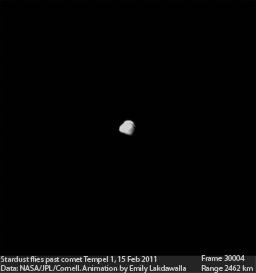
It's hard to track the surface features on Tempel 1 near closest approach because of the rolling of the spacecraft as it passed, so in this animation I tried to compensate for Stardust's changing distance and orientation to the comet by resizing and rotating frames. I'm not sure how successful it is but it was an enjoyable exercise.
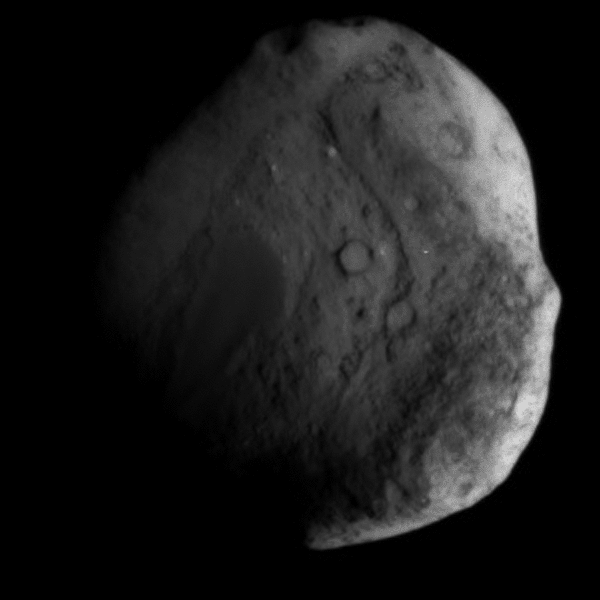
Next, here's a before-and-after view of the Deep Impact crash site. The crater is very, very subdued, but it is unmistakably there.
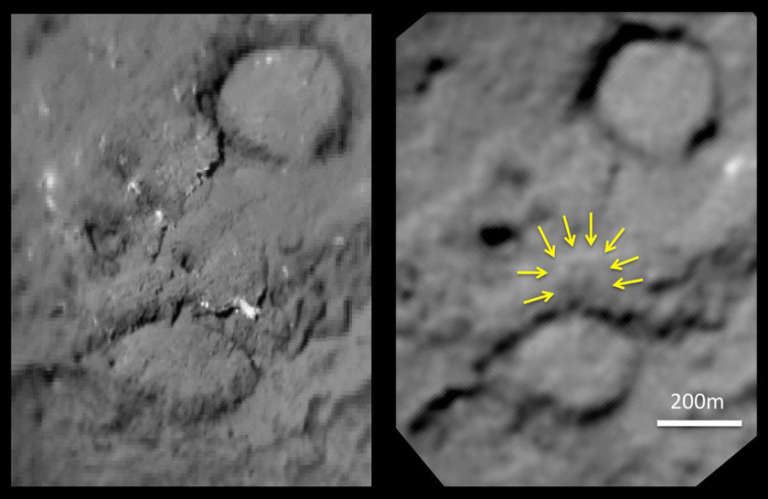
The folks at unmannedspaceflight.com have been messing around with the publicly released images, trying to see if they can make the crater appear more obvious. This first effort is from Ian Regan, who stacked several Stardust images to try to bring out more definition in the shape of the crater. In this view it seems to have an irregular, polygonal outline:

Here's another attempt to explore surface changes by morphing one image to another. This approach is hazardous because of the different viewing angle and lighting angle between Deep Impact and Stardust -- these two conspire to make the lower of the two circular features appear to wobble back and forth between the two images, when we're really just seeing it from two slightly different perspectives. But I think this animation makes it easier to see the surface changes due to the Deep Impact crater. As well as some along the smooth flow-like feature.
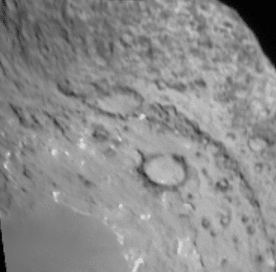
Speaking of surface changes along the flow-like feature, Jessica was really impressed with those. "Our wildest hope was that the flow would move -- and it really did!" She said that they'll work with shape models to try to figure out what changed over the last six years. She said, "We'll probably find out that a lot of the planet didn't change very much, and some of it changed quite radically."
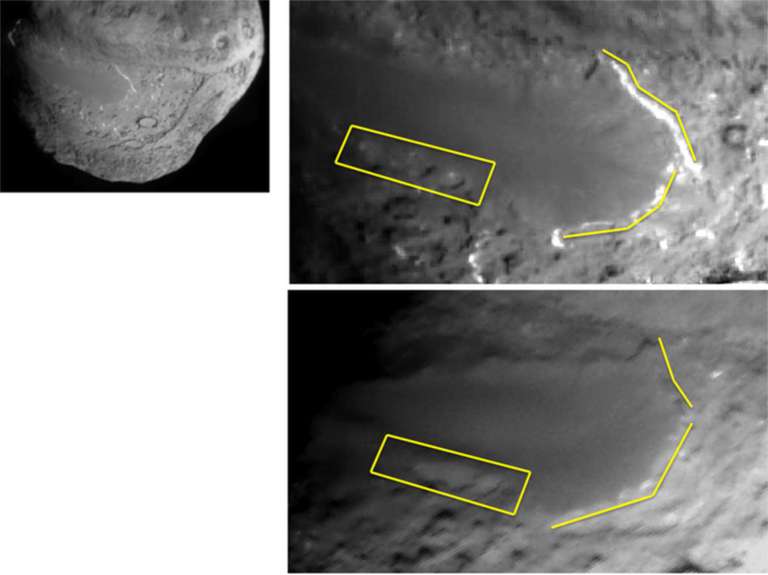
So there you go. Enjoy touring Tempel 1. I'll post more images and interpretation as I hear it! I'll close by posting Daniel Macháček's great crossed-eye stereo view of the comet so that I have all the best images in one post.

Support our core enterprises
Your support powers our mission to explore worlds, find life, and defend Earth. You make all the difference when you make a gift. Give today!
Donate

 Explore Worlds
Explore Worlds Find Life
Find Life Defend Earth
Defend Earth

